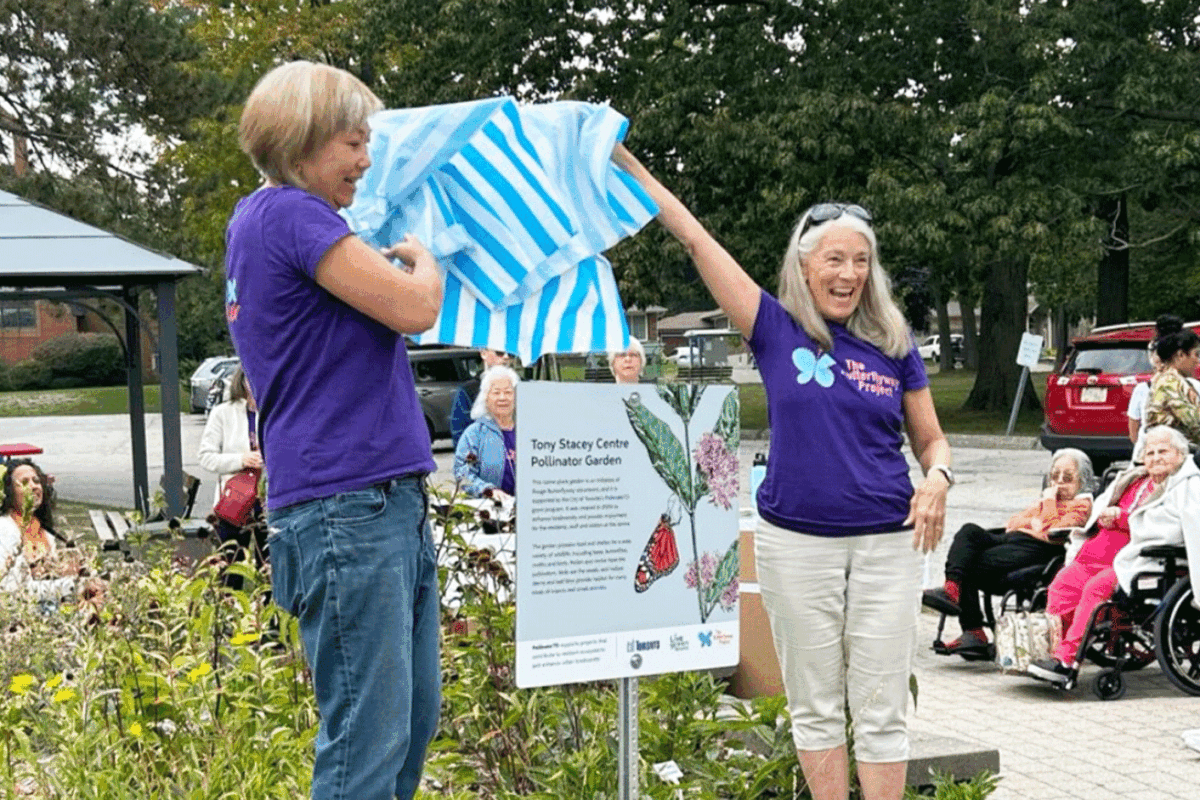
On September 13, Rouge Butterflyway volunteers held an event to celebrate the native gardens they created at the Stacey Centre and reveal their new pollinator garden sign.
By Kathryn Stocks
The Rouge Butterflyway celebrated the completion of its native plant gardens at the Tony Stacey Centre with an event on September 13. Attended by residents and staff from the Stacey Centre as well as guests from our community, Butterflyway volunteers talked about their work on the gardens.
In 2022-23, the group first applied for a PollinateTO grant from the City of Toronto. Grants of up to $5,000 are available to support community-led projects that directly result in the creation of pollinator habitat that’s visible to the public. We didn’t get the grant that year, but we offered to work on the Stacey Centre’s gardens anyway. We trimmed, weeded, mulched and put in some native plants among the existing flowers.
In 2024, we were successful in getting the PollinateTO grant and we started to transform most of their gardens. We took out many of the hostas and day lilies and all of the dying boxwoods. In June, we engaged a landscaper to help us design the gardens and we started the first round of planting natives in the fall. We also had several overgrown barberry bushes removed. The second round of planting came in the spring of this year.
If you visit the gardens, you’ll see a variety of native plants that bloom at different times. This ensures that pollen and nectar are available to pollinators throughout the spring, summer and fall. We’ve carefully labelled them so if there’s something you’d like to plant in your own garden, you will know what it’s called. At the event last month, we also unveiled a new sign for the garden. We hope you’ll visit the gardens and take a look.
As we head into fall, it’s good to remember that if everyone added a few native plants to their yards, we would have more bees, butterflies and other pollinators because they wouldn’t have to travel far between gardens. That’s what a butterflyway is all about.
Another tip for this season is to leave your leaves and plant stems either on your lawns or in your gardens so that these insects have a cozy place to spend the winter. Some butterflies, such as mourning cloaks, eastern commas and Milbert’s tortoiseshells, overwinter as adults in leaf litter. Most other types of butterflies overwinter as eggs, caterpillars or chrysalides. Monarchs, of course, head to Mexico for the season.
Many bee species lay their eggs in the hollow stems of our garden plants, and bumblebee queens spend the cold weather in holes they dig in the earth under the leaves. So please keep the dead leaves and stems on your lawn and in your gardens this fall. These important pollinators don’t deserve to be tossed away in leaf bags!
